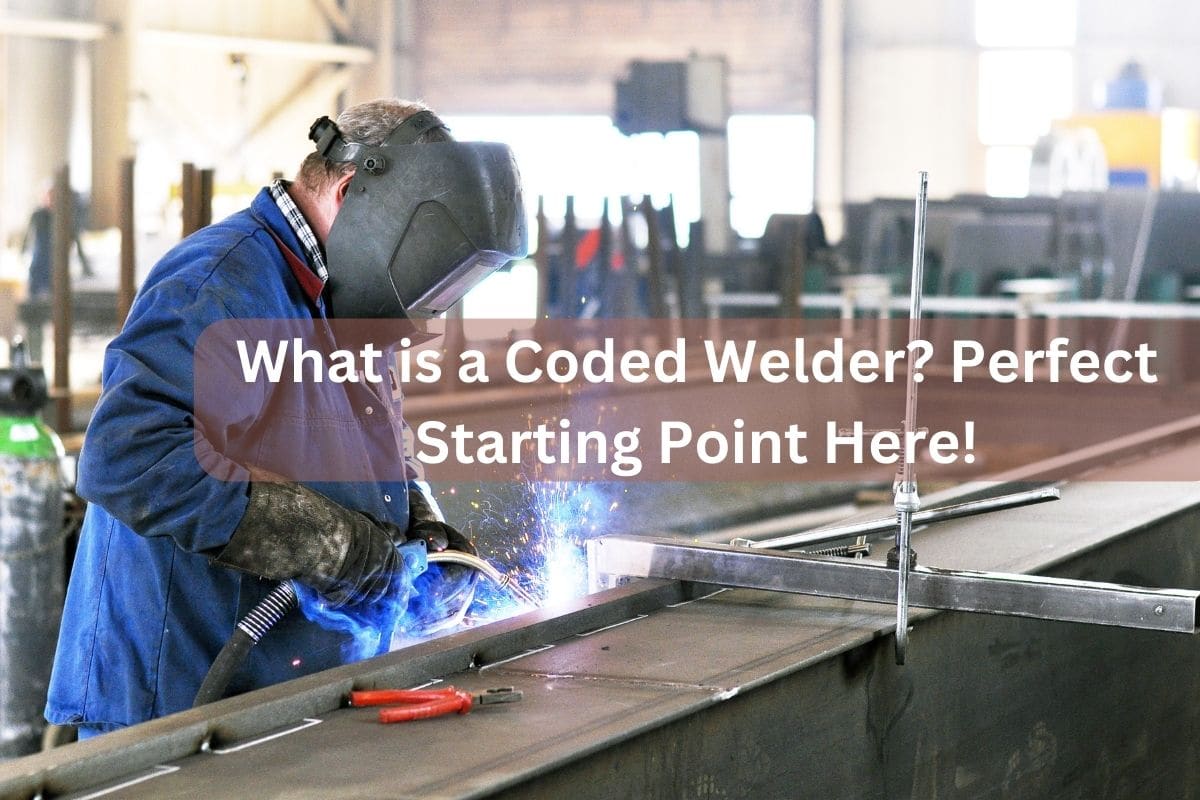So, What is a Coded Welder? This might be a term you’ve heard in passing, especially if you’ve ever been around heavy machinery, construction sites, or even just those DIY home improvement shows.
Today, we’re diving deep into the world of coded welding, ensuring you not only understand what it means but also why it’s such a crucial profession in our modern world.
The Definition of Coded Welder
It’s always best to start at the beginning, right?
A coded welder is essentially a super-skilled welder who’s been tested and approved against a particular standard.
But, before you jump to conclusions, it’s worth noting that while this term sounds very official, the qualification or standard itself doesn’t actually use this name. Think of it more as industry jargon.
Now, for some quick info:
- What it is: A term for a welder approved against a specific standard.
- What it isn’t: The official name of the qualification or standard.
- Main Standards: In the UK, the BS EN ISO standards are the go-to, while in the US, the ASME IX and AWS standards reign supreme.
Why Are Coded Welders Essential?
Good question! Here’s the scoop: Standards ensure that a welded joint meets the necessary quality and integrity for the task at hand.
Each industry has its own specific standards. Just as you wouldn’t want someone building your home without following a blueprint, industries don’t want welders working without proven skills.
Expanding on those standards mentioned earlier:
- Pressure Vessels: BS EN ISO 9606, ASME Section IX.
- Process Pipework: BS 4872, BS EN ISO 9606, ASME Section IX.
- Structural Fabrication: BS EN 287, BS 4872, BS EN ISO 9606, AWS D1.1/ D1.2/ D1.6.
- Storage Tanks: BS 4872, BS EN ISO 9606, AWS D1.1/ D1.2/ D1.6.
Read Also : What is a Groove Welding? Essential, Informative Breakdown
Class 1 Welder Coding
Getting coded as a Class 1 Welder is like earning a master’s degree in welding. It’s intense, it’s demanding, and it’s absolutely worth it.
This is for those working on critical structures, such as pressure vessels or offshore platforms.
So, what’s the process like?
- A welding inspector observes the welder approval testing.
- The weld quality is assessed using non-destructive techniques (like X-rays) and mechanical methods (e.g., Bend Tests) in a UCAS approved lab.
- If both tests are passed – voila! – you’re now a coded welder.
Always remember that testing is usually job-specific. So, even if you’re coded for one task, it doesn’t necessarily mean you’re prepared for another.
Class 2 Welder Coding
While not as stringent as Class 1, Class 2 coding is nothing to sneeze at.
When is it used?
In situations that aren’t super demanding, such as small building frames or non-structural work, you might not need a Class 1 welder. That’s where Class 2 comes in.
Even if you’re just welding as a small part of your job, you still need to be competent. BS 4872 serves as a yardstick for those welders.
But remember, just because you’ve been coded in one specification doesn’t mean you’re a jack of all trades. Every specification requires a fresh set of training and tests.
Some welders, the dedicated few, take multiple tests for different standards. These folks? They’re termed “multi-coded welders.” Talk about being versatile!
Read Also : What is a Seal Welding? Excellent Detailed Insights
Conclusion
As we wrap up our exploration into the realm of coded welding, we hope you’ve gained a deeper insight into ‘What is a Coded Welder.’
Whether you’re in the industry, looking to join, or simply curious, there’s no doubt about the importance and intricacy of this profession. Got more questions, insights, or comments? We’d love to hear from you! Comment below and let’s keep this conversation going.


